AMERICAN FOOTBALL MONTHLY THE #1 RESOURCE FOR FOOTBALL COACHES
Article CategoriesAFM Magazine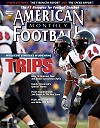
|
Linfield\'s Flat Drop Drillsby: Joseph SmithHead Coach, Linfield College © More from this issue Because of the high priority placed on defensive pass coverage versatility, many different positions need to learn how to defend the flat drop zone. Many teams will not only use the OLB to cover the flat, but will roll a safety and / or cornerback up to the flat as well. That can result in requiring as many as six different positions to be proficient at a flat drop and that is why we believe is needs to be drilled frequently. Fundamental Concepts: We teach our players that there are two basic situations a flat defender will be faced with: a vertical or a horizontal stretch. The vertical stretch is one in which there is a WR behind them at usually 10-15 yards and a WR in front of them near or behind the line of scrimmage (LOS). The horizontal stretch occurs when the defender has a route attacking the sideline and a rout attacking the curl area. Usually this has a vertical component as well as the routes will generally be on different levels. No matter what type of stretch the defender is presented, we teach two fundamental concepts. 1. Protect the most dangerous route. 2. Be set up when the QB is set up – adjust to the QB’s drop – and have a good break on the ball. By protecting the most dangerous route, usually the deepest, the defense can attempt to force the offense to throw to the least dangerous route and minimize the yardage gained. By being set up and in a good balanced position when the QB is ready to throw, the defender can adjust his width and depth according to the QB’s drop and get a quicker break on the ball and further decrease the yardage. This can only happen if the defender learns to have his head on a swivel and constantly move his vision between the QB and WR(s) attacking the flat. We teach the flat drop with a five-drill progression. This can be done with just one defensive position at a time (safeties, then corners, then OLB’s) or with a mixture of positions. If using a mixture, each player will need to initiate his movement from their position specific alignment, resulting in the DB’s rolling up and the OLB’s dropping for width and depth (See Diagrams 1A and 1B). 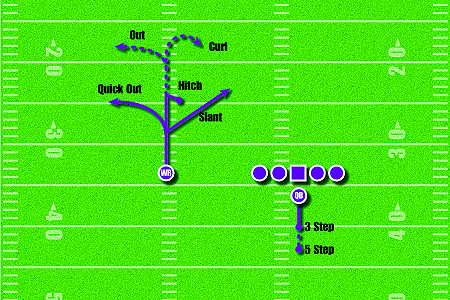 Diagram 1A. 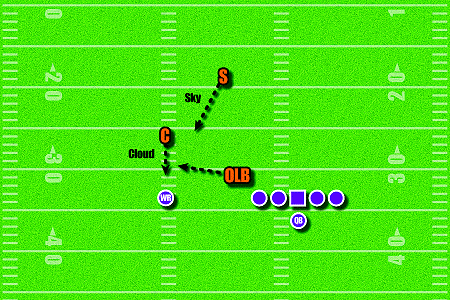 Diagram 1B. The aiming points and the re-route technique required of the DB’s rolling up will vary according to the coverage being run and is too involved to be covered in this article. This situation can happen in many formations, where just one eligible WR goes out on a route to a side. The offense will typically run isolation routes. Since no one else is attacking the flat, the defender’s job is to stay in the passing lane as long as possible. This is the foundation of the flat drop. The WR’s job is to stay in the passing lane as long as possible. The WR’s give a hand signal to the QB’s as to the route they will run and the QB must simulate the appropriate three or five step drop so the defender can get used to adjusting the depth of his drop to this visual cue. We teach an aiming point on a five-step drop at seven yards deep and two yards inside the WR’s alignment. On a pass read, the defender drops on that track then adjusts. On a three-step drop, the defender will settle at four yards rather than seven. Initially we will add an offensive tackle and a running back to the drill to add the possibility of a run read to the drill, so that run / pass differentiation can be worked as well (See Diagram 2). 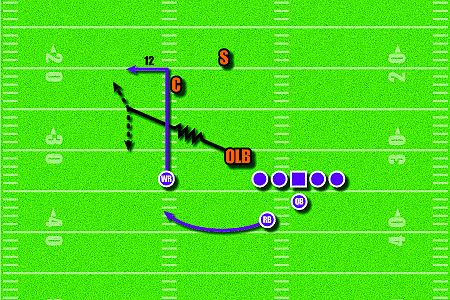 Diagram 2. Single WR, High|Low Stretch (Route: Single WR runs a 12 yard out,back arrows or flares) This drill is set up the same way as Drill 1, but the WR runs a 12 yard out and a RB is used to flare or arrow out of the backfield in order to create a vertical high / low stretch. The QB should look deep and if it is covered then throw short. If he reads that the defender has too much vision on the route then he should throw to the RB to force the defender to keep swiveling his vision between the WR and the QB. The key for the defender in this drill is to get his depth and get set up, then read the QB’s intention. As soon as the QB starts to turn his shoulder to throw the arrow or flare, the defender should start breaking forward to minimize the yardage. If the defender is set up rather than drifting backward when the QB turns toward the arrow, he can then close most of the vertical stretch (See Diagram 3). 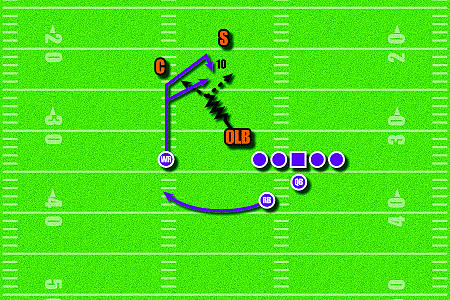 Diagram 3. Drill 3 is set up just like Drill 2, however, the WR now runs a curl or slant while the QB executes the appropriate drop. This creates a horizontal stretch in which the defender must try to hold the curl or slant for just a few seconds, and then break to keep leverage on the arrow or flare. By holding the curl / slant it buys time for the other zone players not in the drill to get to the route. After a while, combine Drill 2 and 3 so that the defender must read whether he is getting a vertical or a horizontal stretch. The next drill (See Diagrams 4A and 4B) 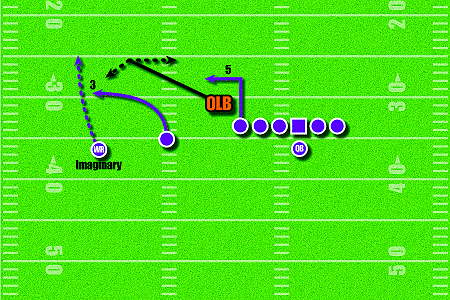 Diagram 4A. 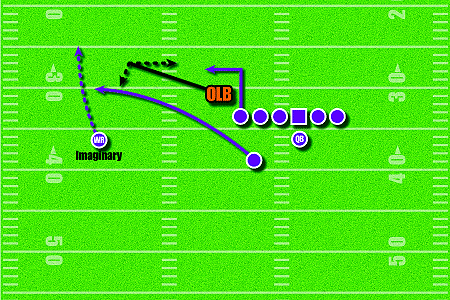 Diagram 4B. Two WR's - Double Out (Route: Working the double out route from a 3x1 Set, a horizontal stretch. Also from a Pro Set with a cheated RB coming out of the backfield) focuses specifically on the double out route that creates a horizontal stretch for the flat defender. The key technique in this drill is for the defender to get his width first and get set up with his vision on the QB. If he can be set up with his body pointed at a 45 degree angle directly pointing at the QB, he can then break in a straight line toward either the arrow or the inside route. Reading the QB’s shoulder turn to the flat will increase the defenders close to the ball. It is important to note that the pass will probably be complete but it should lead to a good hit on the inside route and a short gain if thrown to the arrow. The inside route can be varied to simulate the two ways different teams run this route with either an out route that gains ground outside to stay away from the ILB or an out route that settles to stay away from the flat defender. Two WR’s – Double Out (Route: Working the double out route from a 3 x 1 Set, a horizontal stretch. Also from a Pro Set with a cheated RB coming out of the backfield). This final drill focuses on adjusting to the movement of the QB outside the pocket on the sprint pass. The defender must set up much wider, at the numbers, and get to 1- yard depth. He must expect a vertical stretch with a route coming behind him to the sideline at 12 yards depth and a short route attacking the flat in front of him. The defender must use the high / low technique and protect the deepest route but get a good break on the short route when it is thrown. The defender needs to see all the combinations of flood routes that he could face. To make this realistic, the QB needs to sprint out and throw from outside the pocket, either on the run or with a quick set up (See Diagram 5). 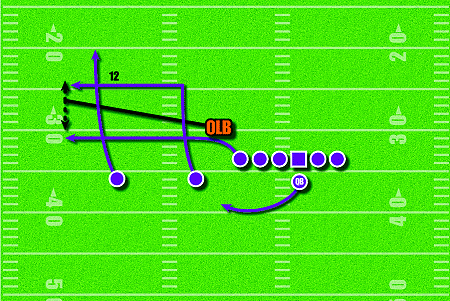 Diagram 5. Sprint Out (ROute: Working sprint pass from a 3x1 set or a Pro Set. Ue variations of a flood) (Route: Working sprint pass from a 3 x 1 set or a Pro Set. Use variations of a flood) |
|
| HOME |
MAGAZINE |
SUBSCRIBE | ONLINE COLUMNISTS | COACHING VIDEOS |
Copyright 2024, AmericanFootballMonthly.com
All Rights Reserved




